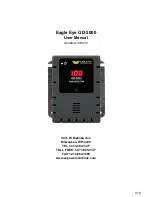
12
25
TEKNETICS
Comprehensive Operating Manual & Guide to Metal Detecting
TEKNETICS
Comprehensive Operating Manual & Guide to Metal Detecting
SEARCH TECHNIQUES
Sweeping Searchcoil
(this does not
apply to Pinpointing with the trigger
switch) Keep the searchcoil in motion to
detect targets. Sweep the searchcoil
parallel to the ground; do not lift the
searchcoil at the end of the sweep.
When you have located a target and
continue sweeping back and forth for
verification, use broad, deliberate sweeps
across the target for the most accurate
target ID. Do not use short sweeps as
you might with other metal detectors.
Shallow Targets
Shallow targets tend to give multiple
responses, with the last response being
the one that remains illuminated on the
visual display. This last response is usually sampled at the edge of the searchcoil and will
tend to be inaccurate. If you suspect a shallow target (within 2 to 3 inches of the searchcoil),
lift the searchcoil slightly, and slow down your sweep speed until you notice a single response
consistently in the same place.
Large shallow targets will cause signal overload, indicated by the siren sound. In these instances,
raise the searchcoil until the overload warning disappears, and sweep at this increased height.
Large Targets
If an overload warning is not confined to a small spot, you are probably overloading on a large
object, for example, a large iron pipe, reinforcing steel in concrete, or buried sheet metal. It is
usually not possible to locate objects, such as coins, in close proximity to large masses of metal.
Pinpointing With the Trigger Switch
When you turn the T
2
on, the ground cancellation setting is preset to give a positive response
on nearly all soils. This means that if you are pulling the pinpoint trigger, the audio tone will
get louder as you lower the searchcoil to the ground. But you do not want to hear the ground;
you just want to hear the target. So always Ground Cancel first.
After you have discovered a buried metal target using the ALL METAL or DISCRIMINATION
Modes, use the trigger switch to pinpoint its exact location.
Position the searchcoil an inch or two (2.5-5cm) above the ground, and to the side of the
target. Then pull the trigger. Now move the searchcoil slowly across the target, and the sound
will communicate the target’s location. As you sweep from side to side, and hear no sound at
the ends of the sweep, the target is located in the middle of that zone, where the sound is
loudest and the audio pitch is highest. If the sound is loud over a wide area, the buried object
is large. Use the PinPoint feature to trace an outline of such large objects.
WRONG
RIGHT
GROUND CANCELLATION
What is Ground Cancellation?
All soils contain minerals. Signals from ground minerals are often tens or hundreds of times
as strong as the signal from a buried metal object. The magnetism of iron minerals, found in
nearly all soils, causes one type of interfering signal. Dissolved mineral salts, found in some
soils, are electrically conductive, causing another type of interfering signal.
Ground Cancellation is the process by which the metal detector cancels the unwanted ground
signals while leaving signals from buried metal objects intact. This is accomplished by
establishing the detector’s internal Ground Phase setting; this setting is calibrated to the soil
and eliminates the ground minerals’ signal.
When the detector is calibrated to the actual soil condition, the result will
be deeper target detection, quieter operation, and more accurate target
identification. This calibration, or Ground Cancellation, can be
accomplished automatically with the detector’s internal computer, by
pushing the Trigger Switch forward, or manually in the All Metal menu.
The ground cancellation setting carries through into both All Metal and
Discrimination modes. In Discrimination mode, the ground signal is
generally inaudible unless the discrimination setting is 0.
AUTOMATIC GROUND CANCELLATION PROCEDURE
(FASTGRAB™)
1. Find a spot of ground where there is no metal present.
2. Hold the detector with the searchcoil about one foot above
the ground.
3. Push the TRIGGER SWITCH forward with your index
finger.
4. Physically pump the searchcoil and
detector up and down over the ground.
Lift it about 6 inches above the ground and
lower it to within 1 inch of the ground,
about once or twice a second.
5. A 2-digit value will appear on the display. This is the
Ground Phase setting.
If the detector’s internal computer is unable to
cancel the ground signal, the message CAN’T
GC will appear; find another spot of ground
and try again.
TekneticsMANUAL.qx6 4/2/07 11:02 AM Page 12











































